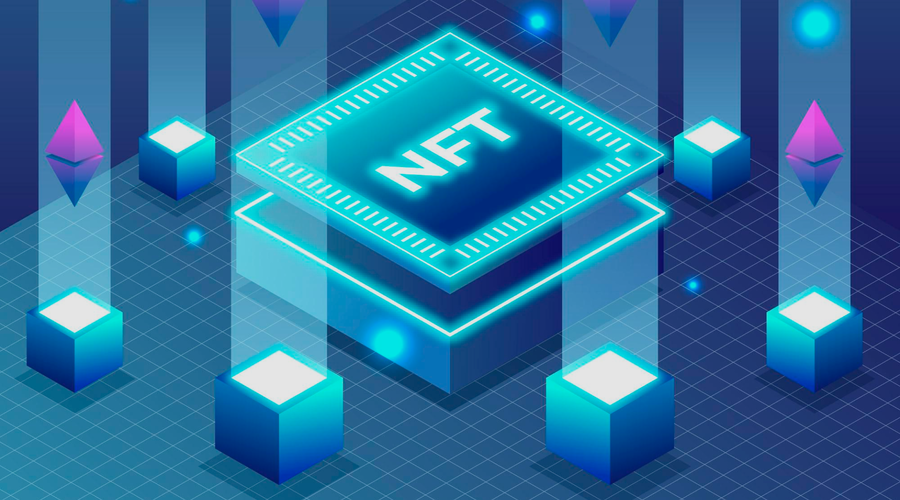In recent years, the world of blockchain technology has witnessed a surge in the popularity of Non-Fungible Tokens (NFTs). NFTs have revolutionized the way digital assets are bought, sold, and traded, allowing creators to tokenize their unique works of art, collectibles, and other digital items. As NFTs continue to gain traction, the need for seamless and secure cross-chain transfers has become increasingly important. One crucial aspect of cross-chain NFT transfers is addressing transaction reversibility. In this article, we will delve into the challenges associated with transaction reversibility in cross-chain NFT transfers and explore potential solutions to ensure the smooth and secure transfer of these unique digital assets.
Understanding Transaction Reversibility in Cross-Chain NFT Transfers
What is Transaction Reversibility?
Transaction reversibility refers to the ability to undo or roll back a transaction in case of an error, fraudulent activity, or other unforeseen circumstances. In the context of cross-chain NFT transfers, it involves ensuring that a transfer can be reversed if any issues arise during the process. This is especially crucial when dealing with high-value NFTs, as any loss or mishap can have significant financial and emotional implications.
The Importance of Transaction Reversibility in Cross-Chain NFT Transfers
Transaction reversibility is vital for maintaining trust and confidence in cross-chain NFT transfers. Without the ability to reverse a transaction, users may be reluctant to participate in cross-chain transfers, fearing the irreversible loss of their valuable digital assets. Addressing transaction reversibility is essential for the continued growth and adoption of NFTs across different blockchain networks.
- Asset Protection:
- Transaction reversibility safeguards digital assets during cross-chain transfers.
- It provides an opportunity to rectify errors, prevent losses, and protect the value of NFTs.
- Risk Mitigation:
- Transaction reversibility reduces the risk of irreversible mistakes or fraudulent activities.
- It allows users to revert transactions if they encounter issues or unauthorized activities during cross-chain transfers.
- User Confidence and Trust:
- Transaction reversibility instills confidence and trust in users participating in cross-chain NFT transfers.
- Knowing that transactions can be reversed if necessary promotes a sense of security and encourages broader adoption.
- Flexibility in Operations:
- Reversible transactions enable flexibility in cross-chain operations.
- Users have the freedom to experiment, test, and adapt their strategies without the fear of permanent asset loss.
- Error Correction:
- Transaction reversibility facilitates the correction of errors in the transfer process.
- It allows users to rectify any mistakes or inaccuracies that may occur during the cross-chain transfer of NFTs.
- Protection Against Technical Issues:
- Reversible transactions act as a safety net against technical glitches or network failures.
- If technical issues arise during the transfer, users can reverse the transaction and attempt it again when the issue is resolved.
- Recovery from Security Breaches:
- In the event of a security breach or unauthorized access, reversible transactions provide an opportunity to reverse the transfer and mitigate potential losses.
- Legal and Compliance Considerations:
- Transaction reversibility addresses legal and compliance concerns in cross-chain transfers.
- It ensures that users have the ability to rectify any non-compliant or invalid transactions, adhering to regulatory requirements.
- Enhanced User Experience:
- Transaction reversibility enhances the overall user experience in cross-chain NFT transfers.
- It reduces anxiety, uncertainty, and the fear of irreversible mistakes, making the process more user-friendly and intuitive.
- Marketplace Integrity:
- Transaction reversibility contributes to the integrity of NFT marketplaces.
- It protects buyers and sellers from potential scams or fraudulent activities, fostering a trusted and reliable marketplace environment.
The importance of transaction reversibility cannot be understated in the context of cross-chain NFT transfers. It provides security, flexibility, and peace of mind to users, ensuring the smooth and reliable transfer of digital assets across different blockchain networks.
Challenges of Transaction Reversibility in Cross-Chain NFT Transfers
- Blockchain Interoperability:
- Lack of seamless interoperability between different blockchain networks.
- Difficulty in transferring NFTs from one blockchain to another, hindering transaction reversibility.
- Consensus Mechanisms and Smart Contract Standards:
- Varying consensus mechanisms and smart contract standards across blockchain networks.
- Incompatibilities between different mechanisms and standards, making it challenging to ensure reversible transactions.
- Scalability and Performance:
- Scalability issues leading to congestion, delays, and higher fees.
- Reduced efficiency and reliability of reversible transactions due to increased transaction volume.
- Risk of Fraudulent Activity:
- Potential for fraudulent activities during cross-chain transfers.
- Unauthorized access or tampering with transactions, compromising transaction reversibility.
- Lack of Standardized Reversibility Protocols:
- Absence of standardized protocols for transaction reversibility in cross-chain transfers.
- Difficulty in implementing consistent and reliable reversible transfer mechanisms.
- Complexity in Auditing and Verification:
- Challenges in auditing and verifying cross-chain transactions for reversibility.
- Increased complexity due to the involvement of multiple blockchain networks and platforms.
- Security Vulnerabilities:
- Potential security vulnerabilities that can compromise transaction reversibility.
- Exploitable weaknesses in the cross-chain transfer process, leading to irreversible transactions.
- Regulatory and Legal Challenges:
- Regulatory and legal complexities surrounding cross-chain transfers.
- Uncertainties in the legal framework governing reversible transactions across multiple jurisdictions.
- Lack of User Education and Awareness:
- Limited understanding and awareness among users regarding transaction reversibility.
- Insufficient education on best practices and precautions to ensure reversible cross-chain transfers.
- User Experience and Interface Limitations:
- User experience challenges in executing reversible transactions across different blockchain networks.
- Complex and non-intuitive interfaces that may confuse users and hinder transaction reversibility.
Addressing these challenges is crucial for the development and widespread adoption of secure and reversible cross-chain NFT transfers. By overcoming these obstacles, the blockchain community can ensure the integrity and trustworthiness of cross-chain transactions, enabling a seamless and reliable transfer of valuable digital assets.

Solutions for Addressing Transaction Reversibility
- Atomic Swaps:
- Leveraging atomic swaps for direct asset exchange between different blockchain networks.
- Ensuring either the completion of the transfer or its failure, eliminating the risk of partial or incomplete transactions.
- Bridging Mechanisms:
- Establishing robust bridging mechanisms that act as intermediaries between blockchain networks.
- Facilitating reversible transfers of NFTs by providing a connection and compatibility between different chains.
- Layer 2 Solutions:
- Implementing layer 2 solutions that process transactions off-chain or in secondary layers.
- Enhancing scalability, transaction speeds, and security, improving the efficiency and reversibility of cross-chain transfers.
- Standardized Reversibility Protocols:
- Developing and adopting standardized protocols for transaction reversibility in cross-chain transfers.
- Ensuring consistency and reliability in reversible transfer mechanisms across different blockchain networks.
- Enhanced Smart Contract Standards:
- Advancing smart contract standards to support transaction reversibility in cross-chain transfers.
- Implementing standardized smart contract functionalities that enable reversible transactions.
- Improved Interoperability Solutions:
- Focusing on enhancing interoperability between blockchain networks for seamless reversible transfers.
- Developing cross-chain communication protocols and frameworks that facilitate reversible transactions.
- Advanced Security Measures:
- Strengthening security measures to mitigate risks and vulnerabilities associated with transaction reversibility.
- Implementing robust authentication, encryption, and validation mechanisms to ensure secure reversible transfers.
- User-Friendly Interfaces and Tools:
- Designing intuitive user interfaces and tools that simplify the process of reversible cross-chain transfers.
- Enhancing user experience and reducing complexities to encourage wider adoption of reversible transaction solutions.
- Collaboration and Industry Standards:
- Encouraging collaboration among blockchain developers, platforms, and regulatory bodies to establish industry standards for transaction reversibility.
- Working together to address technical, legal, and operational challenges associated with reversible cross-chain transfers.
- Education and Awareness:
- Increasing user education and awareness regarding transaction reversibility and best practices for secure cross-chain transfers.
- Providing resources, guidelines, and educational materials to empower users in making informed decisions during reversible transactions.
Implementing these solutions and best practices will foster a more secure and reliable environment for cross-chain NFT transfers, ensuring transaction reversibility and protecting the interests of users and stakeholders in the blockchain ecosystem.
Best Practices for Secure and Reversible Cross-Chain NFT Transfers
Conduct Thorough Due Diligence
Before engaging in cross-chain NFT transfers, it is essential to conduct thorough due diligence on the platforms, wallets, and bridges involved. Research the reputation, security measures, and track record of the entities involved to minimize the risk of irreversible transactions.
Utilize Trusted Platforms and Exchanges
To enhance the security and reversibility of cross-chain NFT transfers, utilize trusted platforms and exchanges with a proven track record of facilitating secure transactions. Trusted platforms often implement additional security measures and offer user-friendly interfaces, simplifying the process of reversible transfers.
Opt for Multi-Signature Wallets
Multi-signature wallets require multiple parties to authorize a transaction, adding an extra layer of security and reversibility. By utilizing multi-signature wallets, the risk of unauthorized or irreversible transfers can be significantly reduced, ensuring the safe transfer of NFTs across chains.
Conclusion
Addressing transaction reversibility in cross-chain NFT transfers is crucial for maintaining trust, security, and confidence in the growing NFT ecosystem. By understanding the challenges associated with transaction reversibility and implementing appropriate solutions and best practices, users can confidently engage in cross-chain transfers, knowing that their valuable digital assets are protected. As blockchain technology continues to evolve, it is essential for developers, platforms, and users to collaborate in addressing transaction reversibility to foster the widespread adoption of NFTs.
FAQs
- What are cross-chain NFT transfers? Cross-chain NFT transfers refer to the process of transferring Non-Fungible Tokens from one blockchain network to another.
- Why is transaction reversibility important in NFT transfers? Transaction reversibility ensures that transfers can be undone or rolled back in case of errors or unforeseen circumstances, protecting users from irreversible losses.
- How can atomic swaps facilitate reversible NFT transfers? Atomic swaps allow for direct asset exchange between different blockchains, ensuring either the completion of the transfer or its failure.
- What are layer 2 solutions in the context of cross-chain NFT transfers? Layer 2 solutions are secondary layers or off-chain protocols that enhance scalability and transaction speeds, improving the efficiency and reversibility of cross-chain transfers.
- Why is due diligence important in cross-chain NFT transfers? Conducting thorough due diligence on platforms, wallets, and bridges involved in cross-chain transfers helps minimize the risk of irreversible transactions and ensures the security of digital assets.



